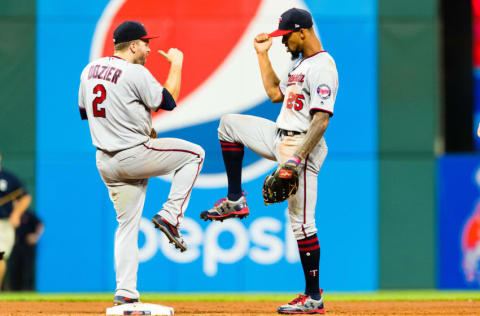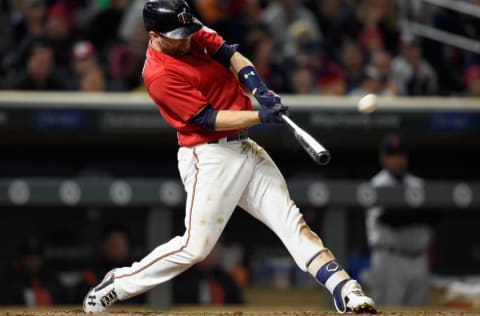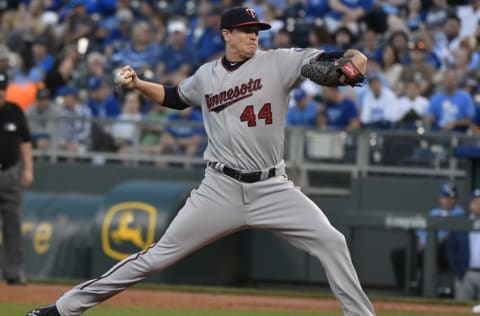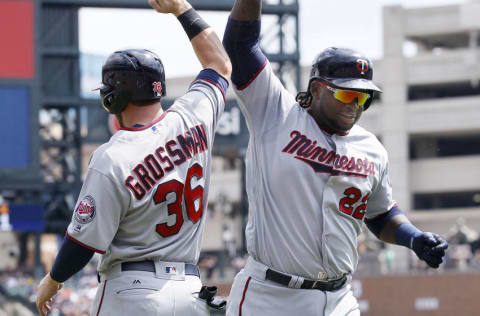Minnesota Twins: 2017 Season Review and offseason preview


What went right, what went wrong, and what are the top priorities for the Minnesota Twins this offseason?
The last four years have been a roller coaster ride for the Minnesota Twins. They went from last place to second place to last place to second place and their win total jumped from 70 to 83 to 59 to 85. In their 83-win season in 2015, the Twins finished three games out of a wild card spot. This year, they claimed the second wild card spot before losing to the Yankees in the win-or-go-home game.
Paul Molitor has guided the team to winning seasons in two of his three years at the helm. Before his arrival, the team had four consecutive losing seasons that included three last place finishes and winning just over 40 percent of their games. He has a strong case to be the AL Manager of the Year for 2017 and was recently signed to a three-year extension that will keep him in Minnesota through 2020.
The team Molitor will continue to guide has young talent like Byron Buxton and Miguel Sano leading the offense, along with veterans Brian Dozier and Joe Mauer for at least one more year. Dozier will be a free agent after this season. Mauer has been with the Twins since he first came up as a 21-year-old in 2004. He’s heading into the final year of an eight-year, $184 million contract that kicked in with the 2011 season and he’s coming off the best year he’s had since 2013.
The 2017 Twins had a good offense, middle-of-the-pack defense, and below-average pitching. Their staff was typical of Minnesota pitching staffs. They were second-to-last in the league in strikeout rate. This combination of offense, defense, and pitching got them the second wild card spot, but they were 17 games behind Cleveland in the division. That gap will be tough to make up.
As the Twins hope to get back to the playoffs next year, let’s take a look at what went right, what went wrong, and the team’s top offseason priorities.

What Went Right
Last offseason, rumors were rampant that Brian Dozier would be traded. One of the prominent spots he was seemingly headed was L.A., to play for the Dodgers. That deal never happened and Dozier went out and had another great season with the Twins that included 106 runs scored, 34 homers, 93 RBI, and 16 steals. Over the last four years, Dozier ranks sixth in the AL in Fangraphs WAR.
It took a few years, but center fielder Byron Buxton started to live up to his hype this season. Going back to before the 2013 season, Buxton was ranked #10, #1, #2, and #2 on the Baseball America Top 100 list. He struggled to hit in his first two attempts at big league play and continued to struggle for the first half of this season. From his major league debut in 2015 to July 14 of this year, Buxton hit .219/.281/.365 in 755 plate appearances. He struck out 33 percent of the time.
Just as the pennant race was heating up, Buxton caught fire. From August 1 to the end of the season, Buxton was on a whole different level. He hit .298/.342/.541, with an improved 27.5 percent strikeout rate. With hitting like that and elite-level defense in centerfield, Buxton was worth 3.5 WAR. This is the guy the Twins have been waiting for.
Another long-time, highly-regarded Minnesota Twins prospect, Miguel Sano, was having a good year until a shin injury sidelined him for most of the last six weeks of the season. He was limited to 114 games. When he was on the field, he hit .264/.352/.507 with 28 homers and 77 RBI. At last report, Sano was contemplating surgery that would involve inserting a titanium rod into his leg to stabilize the bone.
The pitching staff had two guys at the top who had good years. Ervin Santana went 16-8 with a 3.28 ERA. His 4.46 FIP suggests there was some good fortune in that ERA, namely a .245 Batting Average on Balls In Play and a high Left On Base percentage (79.5 percent). Based on actually runs allowed, though, Santana was quite good.
Young Jose Berrios showed a dramatic improvement from the ugly 8.02 ERA he had in his rookie year. He was 14-8, with a 3.89 ERA that matched up nicely with his 3.84 FIP. He improved his strikeout rate, walk rate, and home run rate, which are the three things a pitcher has the most control over. Berrios was a top-40 prospect prior to the 2015 and 2016 seasons who really struggled in his rookie year, but now looks to be back on track to become the impressive starting pitcher he was expected to be.
The bullpen had a couple of unknown-outside-of-Minnesota pitchers, Trevor Hildenberger and Alan Busenitz, who pitched well. Hildenberger had a 3.21 ERA in 37 games. Busenitz was even better, with a 1.99 ERA in 31.7 innings (but with a 4.20 FIP). Lefty Taylor Rogers had a 3.07 ERA (4.09 FIP) and led the league with 30 holds.

What Went Wrong
Beyond Santana and Berrios, the Twins struggled to find adequate starting pitching. Kyle Gibson started 29 games and had a 5.07 ERA (4.85 FIP). Hector Santiago started 14 games, with a 5.63 ERA (6.02 FIP). And everyone’s favorite fat uncle, Bartolo Colon, started 15 games with a 5.18 ERA (5.31 FIP). This is an area the Twins will need to address in the offseason.
The Minnesota Twins had some relievers who struggled also. Ryan Pressly had a 4.70 ERA (4.36 FIP) in 57 games and Tyler Duffey had an ERA near 5.00 in 56 games (4.94), but with a much better FIP (3.72). Duffey had a good 10 starts in his first big league season back in 2015, but hasn’t been very good since, either as a starter (2016) or a reliever (2017).
Most of the Twins’ hitters were at least adequate on offense, but Robbie Grossman didn’t hit for much power (.380 slugging percentage) and struggled in the outfield. He really needs to be kept out of the outfield, but will have to hit for more power to help the team at the DH spot.
Right fielder Max Kepler has had two similar seasons in which he’s straddled the line between league average and replacement-level (around 1 WAR each of the last two years). He’s been a below-average hitter and fielder. He’ll be 25 next season, though, so there is room to grow.

Top Offseason Priorities
According to CBS Sports, the Minnesota Twins had the 22nd-highest payroll in baseball on Opening Day, at around $108 million. There were six teams with payrolls between $99 million and $112 million and the Twins were the only team in this group to finish over .500. This group averaged just under 74 wins per season even with the Twins’ 85 wins included. That’s pretty good bang for the buck.
This is how the lineup and rotation look for 2018 based on their current roster, with salaries from Cot’s Baseball Contracts at Baseball Prospectus:
C Jason Castro, $8 million
1B Joe Mauer, $23 million
2B Brian Dozier, $9 million
SS Jorge Polanco, pre-arbitration
3B Miguel Sano, pre-arbitration
LF Eddie Rosario, pre-arbitration
CF Byron Buxton , pre-arbitration
RF Max Kepler, pre-arbitration
DH Robbie Grossman, arbitration-eligible (projected $2.4 million)
INF Eduardo Escobar, arbitration-eligible (projected: $4.9 million)
SP Ervin Santana, $13.5 million
SP Jose Berrios, pre-arbitration
SP Kyle Gibson, arbitration-eligible (projected $5.3 million)
SP Adalberto Mejia, pre-arbitration
RP Ryan Pressly, arbitration-eligible ($1.6 million)
RP Tyler Duffey, pre-arbitration
RP Taylor Rogers, pre-arbitration
RP Alan Busenitz, pre-arbitration
RP Trevor Hildenberger, pre-arbitration
DL: RP Phil Hughes, $13.2 million, RP Trevor May
Free agents: RHP Matt Belisle, RHP Bartolo Colon, RHP Dillon Gee, LHP Glen Perkins, LHP Hector Santiago
Dead Money: ByungHo Park ($3 million)
As mentioned earlier, the Twins have locked up manager Paul Molitor through the 2020 season. They also made a change of pitching coaches. The team is looking to find and develop pitchers who can miss bats, so they hired Garvin Alston to replace Neil Allen. Alston likes pitchers to focus on “commanding the zone with the fastball” and looks to be a good fit with the philosophy of the Twins front office.
That philosophy includes an increased emphasis on analytics, which is new for the Twins. As part of this new emphasis, the team also recently hired longtime Baseball America editor John Manuel to their pro scouting department. Manuel has been with Baseball America for more than 20 years and was editor-in-chief for more than ten. He should help the team draft and develop young prospects.
Anther change in the baseball operations department is the addition of Jeremy Zoll as the team’s new director of minor league baseball operations. Zoll was with the Dodgers previously and is another sign that the Twins are embracing a different philosophy. With this philosophy of emphasizing analytics, these won’t be your father’s Minnesota Twins.
More from Call to the Pen
- Philadelphia Phillies, ready for a stretch run, bomb St. Louis Cardinals
- Philadelphia Phillies: The 4 players on the franchise’s Mount Rushmore
- Boston Red Sox fans should be upset over Mookie Betts’ comment
- Analyzing the Boston Red Sox trade for Dave Henderson and Spike Owen
- 2023 MLB postseason likely to have a strange look without Yankees, Red Sox, Cardinals
On the field, the Minnesota Twins need pitching behind Santana and Berrios. They generally aren’t big players in the free agent market, so don’t expect Jake Arrieta or Yu Darvish to come to the Midwest. Cheaper free agent starters will be considered. Two minor league pitching prospects, Stephen Gonsalves and Fernando Romero, could be in the mix at some point in 2018. Both pitched well in Double-A last season.
Gonsalves struggled in Triple-A, so he’ll likely get another chance there before coming to the show.
Another priority will be the bullpen. Last year’s team leader in saves, Brandon Kintzler, was traded to the Nationals at the trade deadline. After Kintzler left, Matt Belisle took over the closer’s role and saved nine games, but he’s a free agent and no other pitcher had more than one save. The Twins will have to figure out how they want to construct their bullpen if Belisle they don’t re-sign Belisle.
On offense, the big question is what to do with Brian Dozier. He’s been a terrific bargain on a four-year, $20 million contract that was signed prior to the 2015 season. After being mentioned in trade rumors much of last offseason, Dozier went out and had a five-win season. He’s only under contract for this year, so the Twins will have to decide whether to approach him about an extension, trade him before he becomes a free agent, or just play out the year with him still on the roster.
The longtime face of the franchise, Joe Mauer, is also in the final year of his contract. It’s hard to imagine Mauer playing for any team other than the Twins, but a first baseman who slugs .417 isn’t worth the $23 million per year he’s been paid since 2011.
Next: Will trading Upton haunt Tigers?
The Minnesota Twins have made front office changes that show they are embracing a more modern approach than in year’s past. The future Twins will be built around Buxton, Berrios, and Sano, but the 2018 Twins still have veterans Santana, Dozier, and Mauer to help the kids chase another playoff appearance.